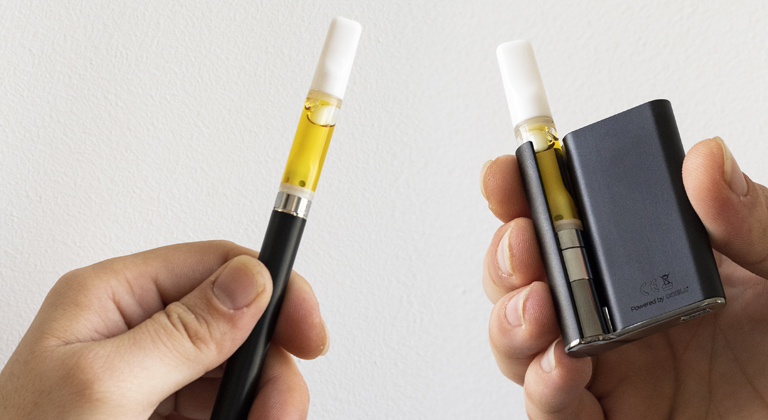Terpenes are organic compounds found in most plants, including cannabis; and they’re responsible for their aromas and flavors. However, as we’ve explained in previous articles, the importance of terpenes goes beyond their sensory effects, as they feature therapeutic properties and may influence the physical and emotional well-being of users.
Moreover, these compounds can enhance the effectiveness of products, boost the effects of cannabinoids, etc.
Each terpene showcases specific beneficial properties, both individually and along with other terpenes. This provides consumers with the opportunity to customize their experience according to their specific needs.
In this article, we’ll explore both the therapeutic role of the most common terpenes (including limonene, myrcene, and pinene), and the importance of terpene profiles in exponentially enhancing the beneficial properties of all types of products.
The interaction between terpenes and cannabinoids, known as the entourage effect, highlights the importance of considering not only the cannabinoids but also the synergy created by using specific terpene profiles. Join us on this journey through the fascinating world of terpenes and their therapeutic potential.
Therapeutic Properties of Terpenes
Discover below some of the beneficial properties of the most common terpenes. Remember that, at the end of this article, we’ll discuss the importance of using terpene profiles vs. isolated terpenes to enhance a broad-spectrum therapeutic effect.
b-Caryophyllene
Anti-cancer, anti-inflammatory, addiction treatment.
Bisabolol
Anti-tumor, anti-cancer, anti-inflammatory.
Borneol
Neurological agent, anti-inflammatory, analgesic.
Camphene
Antibacterial, antioxidant, cholesterol-lowering.
Carene
Antioxidant, antifungal, mosquito repellent, vermifuge.
Cymene
Anti-cancer, antimicrobial, acaricide, lung lesion treatment.
Farnesene
Anti-cancer, neuroprotective.
Fenchol
Antibacterial, antifungal, acaricide.
Phellandrene
Anti-cancer, antibacterial, analgesic.
Guaiol
Antifungal, anti-cancer, antibacterial, anti-leishmaniasis.
Eucalyptol
Anti-cancer, antiviral, neuroprotective, antifungal, antibacterial.
Geraniol
Anti-cancer, antifungal, antiulcerogenic.
Humulene
Insecticide, anti-cancer, antibacterial.
Isoborneol
Neurological agent, anti-inflammatory, analgesic.
Limonene
Anti-cancer, antifungal, UV radiation protector.
Linalool
Anti-cancer, anti-inflammatory, neurological agent.

Myrcene
Sedative, antibacterial, anti-tumor.
Menthol
Permeability enhancer, analgesic, anti-cancer.
Nerolidol
Anti-malarial, trypanocide, antifungal, sedative.
Ocimene
Anti-cancer, antibacterial, anti-inflammatory.
Caryophyllene Oxide
Anti-cancer, analgesic, mosquito repellent.
Phytol
Anti-cancer, antioxidant, anti-inflammatory, chemical precursor.
Pinene
Anti-cancer, antioxidant, anti-inflammatory.
Terpineol
Antibacterial, antinociceptive, antifungal.
Terpinene
Anti-inflammatory, antioxidant, antifungal, acaricide.
Terpinolene
Antibacterial, sedative, anti-inflammatory.
Valencene
Anti-cancer, antibacterial, anti-inflammatory.
Importance of Using Terpene Profiles Vs. Isolated Terpenes to Enhance Therapeutic Properties
Terpenes have traditionally been used in essential oils from different plants, as well as in some sectors (such as the cosmetics industry) either in isolation or in simple terpene profiles.
Nowadays, the use of complex terpene profiles like those of Cali Terpenes is much more widespread. Not only are these far richer than an isolated terpene in aromatic terms, but there’s also an increasing number of studies indicating the importance of a terpene profile (which combines many more of these molecules) for greater product efficacy. Let’s now look at some of the advantages that terpene profiles can offer.
Entourage Effect and Modulation of Effects
By using terpene profiles, you can take advantage of the entourage effect, which refers to the synergy that is created when cannabinoids and terpenes work together. This interaction enhances the effects produced and their therapeutic benefits, and improves the overall efficacy of treatments.
Until the last decade, cannabis plants were classified as Sativa or Indica based on their genetics and/or effects. But now we know that this is an obsolete argument in which two concepts that shouldn’t’ve been confused were crossed (namely the morphology of the plant and the effects produced).
Besides, it was believed that the only elements influencing the effects of cannabis were cannabinoids, but it is actually the terpene profile of each plant that modifies the “standard” effects of cannabinoids, making them more relaxing, stimulating, etc.
With a cannabis product like a THC distillate (very common in legal markets like that of the United States), only the use of different terpene profiles would make it possible to obtain end products with different flavors, smells, and effects, simply by changing the terpene profile of each one of them.
In other words: a THC distillate + Super Lemon Haze terpenes has a more citrusy flavor and produces a more stimulating effect; whereas a THC distillate + Holy Grail Kush terpenes delivers an earthier flavor and a more relaxing effect.
Sum of Properties
Why benefit from just one therapeutic effect when you can benefit from several? Terpene profiles combine their therapeutic properties, making the experience much more complete and even creating new benefits by interacting with each other.
What’s more, many terpenes work better and offer their therapeutic properties at their fullest in the presence of other terpenes, meaning they work better together than in isolation.
Complexity of Effects, Improvement of Experience
Terpene profiles are complex combinations of terpenes which, when added to other products, provide greater complexity than when isolated terpenes are used. And this complexity also translates into a wider range of therapeutic effects and benefits.
Variety and Personalization
Using terpene profiles in products facilitates their classification according to strain, dominant terpenes, dominant effects, therapeutic effects, conceptual flavors, etc.
Not only is the quality and complexity of the terpenes provided important, but also the product’s approach, which is another key to the success of the product line you plan to create.
Find out which classification is most accurate to market your product or to focus on your niche audience, and you’ll have taken a great step towards success!
Aromatic Complexity
Last but not least, the difference in terms of aromatic complexity offered by a terpene profile vs. an isolated terpene is truly monumental.
The organoleptic experience also greatly influences how the user assimilates the effects, how they perceive the quality level, and how their experience develops when trying the product with added terpenes.
Want to enhance the sensory experience of your products? Use terpene profiles and create new dimensions of smell and taste.
Conclusion
Using terpene profiles instead of isolated terpenes doesn’t just offer a more holistic and effective approach to therapy, but also ensures that users get a richer and more balanced experience. The use of complete profiles allows consumers to benefit from a safer and more effective treatment that respects the natural complexity of plants.









